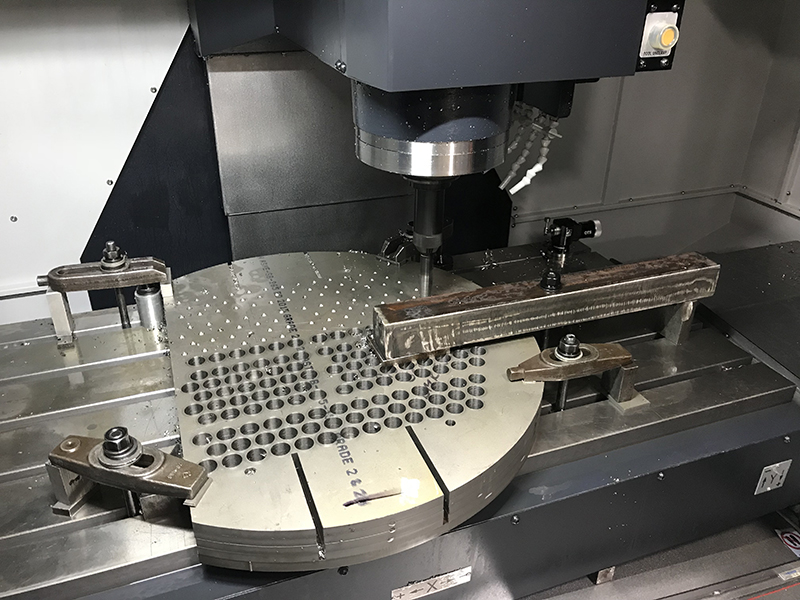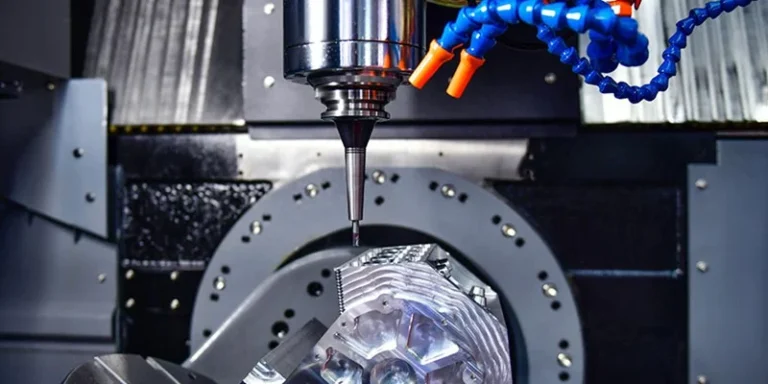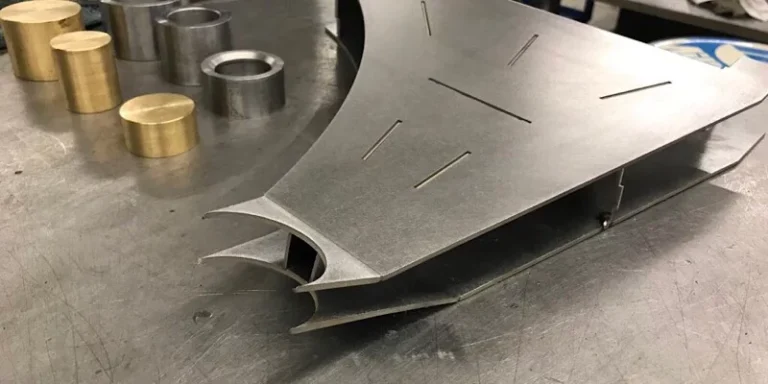Titanium is an exceptional material for CNC machining, known for its ability to withstand high temperatures and resist chemical corrosion. Additionally, its lightweight nature and various other qualities make it highly sought after by manufacturers.
While CNC machined titanium parts are incredibly durable, machining titanium can be challenging due to its high tensile strength. In this article, we will offer valuable insights into CNC machining titanium, guide you on selecting the appropriate cutting tools, and share practical tips to ensure successful machining.
Why Choose Titanium For CNC Machining Parts?
Titanium offers several key benefits as a manufacturing material for CNC machining. Its superior biocompatibility, exceptional corrosion resistance, and the highest strength-to-weight ratio of any metal make it an outstanding choice. Additionally, titanium boasts excellent ductility and good machinability. Here are some reasons to opt for titanium in CNC machining:
- Durability: Titanium is highly durable, making it perfect for CNC machined parts that need to withstand harsh or extreme conditions.
- Non-magnetic: Titanium lacks magnetic properties and exhibits excellent oxidation resistance, making it resistant to corrosive forces.
- Non-toxic: With its corrosion resistance, high biocompatibility, and non-toxic nature, titanium is ideal for medical applications.
These attributes make titanium suitable for various industries, including aerospace, medical, and automotive sectors.
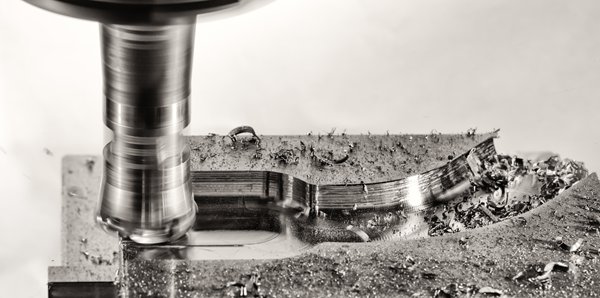
Challenges To Consider When Machining Titanium
While titanium is a versatile material with many applications, manufacturers frequently encounter challenges when machining it. These challenges include:
High Chemical Reactivity and Galling
When machining titanium alloys, certain gases can react with the material, causing issues such as surface oxidation and embrittlement. This reaction can weaken the components and diminish their corrosion resistance.
Additionally, titanium has a low modulus of elasticity relative to its high strength, making it a gummy material to machine. This gumminess can cause titanium to adhere to the CNC cutting tool, leading to tool failure and damage. Beyond tool damage, galling can also compromise the surface finish quality of titanium.
Heat Buildup and Cutting Forces
Maintaining a cool temperature while machining titanium is particularly challenging due to its low thermal conductivity. This property causes heat to accumulate at the tooling point, leading to faster tool wear and potentially compromising the quality of the cut surfaces, especially with harder titanium alloys.
To address this, it’s crucial to use a larger chip load and lower RPM on the CNC machine for these tougher titanium alloys. Additionally, high-pressure coolant can help the cutting tools operate more efficiently, resulting in higher-quality titanium pieces.
Titanium alloys also require significant cutting forces, making them difficult to machine. These forces often lead to tool wear, faulty parts, and high vibration, which can negatively affect product quality and surface finish.
Residual and Hardening Stresses
Due to their crystal structure, titanium alloys lack significant flexibility, which can pose challenges during machining. This crystal structure can increase the cutting force required, making machining more difficult and raising the likelihood of residual stresses. These stresses can lead to issues such as twisting, cracking, or reduced longevity of the machined components.
Useful Tips For Titanium Machining
Many machine shops are reluctant to work with titanium due to the challenges associated with machining this advanced material. However, its exceptional qualities have led many manufacturers to choose titanium for producing high-quality parts. Fortunately, skilled CNC machinists and tool manufacturers have developed valuable tips for successfully machining titanium.
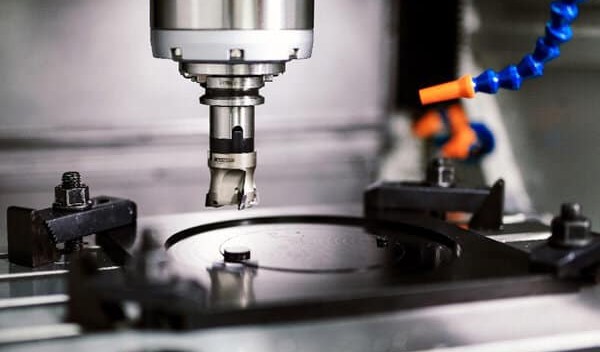
Fasten Parts Securely
Anything you can do to reduce vibration will make machining titanium easier, as the material is already prone to causing tool chatter. To prevent deflection in the workpiece, securely fasten the parts. Additionally, use top-quality CNC machines with highly rigid tooling arrangements. To further minimize tool deflection, consider using shorter cutting tools.
Choose the Right Cutting Tool
Due to the rising demand for titanium, tool makers are developing innovative strategies to enhance its machinability. Cutting tools with coatings such as titanium carbo-nitride (TiCN) or heat-resistant titanium aluminum nitride (TiAlN) can significantly extend tool life.
Overall, machinists should select high-quality, titanium-specific tools and regularly inspect and replace worn-out equipment. Additionally, using tools with a smaller diameter and more cutting edges can help maintain a steady workpiece removal rate while limiting heat buildup.
Consider Cutting Parameters
Temperature control is crucial when machining titanium. One of the simplest ways to keep both the workpiece and tooling cool is to apply steady, high-pressure coolant directed at the cutting area. This helps prevent chips from sticking to your machining tools by blasting them out of the cut region.
Additionally, it’s important to carefully manage feed rates, spindle speeds, and chip loads when working with titanium. This involves minimizing stress on tools and equipment and avoiding prolonged engagement in one spot. An alternative cutting strategy, such as increasing axial cut depth while reducing radial engagement, may also be worth exploring to enhance cutting efficiency and lower machining temperatures.
Prevent Overheating By Using High-Pressure Cooling System
Finishing titanium requires only a small portion of the tool’s radius to be in contact, along with a super-sharp edge and a very small feed per tooth. This, however, makes it difficult to dissipate heat from the work area. If not properly managed, this heat can damage cutting tools and make it challenging to maintain tolerances. Therefore, it’s crucial to use the best possible coolant setup when cutting titanium.
A high-pressure cooling system is an effective aid in this regard. Depending on the application, a spindle may also be essential. Additionally, increasing the coolant concentration can be beneficial when working with titanium to further enhance heat dissipation and improve machining efficiency.
Different Titanium Grades For CNC Machining
Titanium comes in various grades and alloys, each suited to specific applications with its own set of advantages and disadvantages. Let’s explore these grades in detail.
Grade 1 (Pure Titanium with low oxygen content) Grade 1 titanium is widely recognized as one of the most frequently used types, primarily due to its softness and ductility. It offers excellent machinability, impact toughness, corrosion resistance, and formability. However, its strength is lower than other titanium grades. Despite this, it is extensively used in the medical, automotive, and aerospace industries.
Grade 2 (Pure Titanium with standard oxygen content) Often referred to as the “workhorse” of titanium grades, Grade 2 is characterized by its high corrosion resistance, strength, formability, weldability, and ductility, though it has relatively low strength compared to other grades. It is widely used in the medical and aerospace industries, particularly in the production of aircraft engines.
Grade 3 (Pure Titanium with medium oxygen content) While not as popular as Grades 1 and 2, Grade 3 titanium provides good mechanical properties, including high corrosion resistance, machinability, and strength. It is used in the medical, marine, and aerospace industries.
Grade 4 (Pure Titanium with high oxygen content) Grade 4 titanium is notable for its high strength and corrosion resistance. However, it can be challenging to machine, often requiring significant amounts of coolant and a high feed rate. This grade is used in applications such as cryogenic vessels, CPI equipment, airframe components, and heat exchangers.
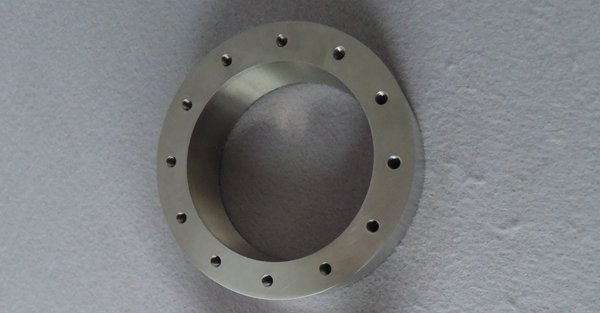
The above Grades 1-4 are all pure titanium. The next section will cover the different grades of titanium alloys.
Grade 5 (Ti-6Al-4V) Containing 6% aluminum and 4% vanadium, Grade 5 titanium alloy is not the strongest alloy available, but it offers high corrosion resistance and formability. Its properties make it ideal for power generation, offshore and marine applications, and critical airframe structures.
Grade 6 (Ti-5Al-2.5Sn) This titanium grade is known for its stability, strength, and weldability, especially at high temperatures. These qualities make it suitable for the production of airframes and jet engines.
Grade 7 (Ti-0.15Pd) Grade 7 titanium is similar to Grade 2, but with added palladium to enhance its corrosion resistance. It has excellent formability and weldability, making it ideal for manufacturing chemical processing equipment.
Grade 11 (Ti-0.15Pd) Similar to Grade 7, Grade 11 titanium is more ductile and has a lower tolerance for impurities. Although it is not as strong as Grade 7, it is well-suited for applications in marine environments and the chlorate manufacturing industry.
Grade 12 (Ti-0.3Mo-0.8Ni) Grade 12 titanium is relatively expensive and contains 0.8% nickel and 0.3% molybdenum, which provide it with excellent weldability, high-temperature strength, and corrosion resistance. It is used in shell and heat exchangers, marine and aircraft components, and more.
Grade 23 (Ti-6Al-4V ELI) Also known as Extra Low Interstitial (ELI) or TAV-ELI, Grade 23 titanium shares similar properties to Grade 5 but is purer. It offers good fracture toughness and biocompatibility but has relatively poor machinability. It is used for orthopedic pins, screws, surgical staples, and orthodontic appliances.
How To Choose The Right Cutting Tools For Machining Titanium?
Using just any cutting tool for CNC machining titanium is generally not advisable. Here’s how to choose the right cutting tools for milling titanium or using other CNC machining techniques.
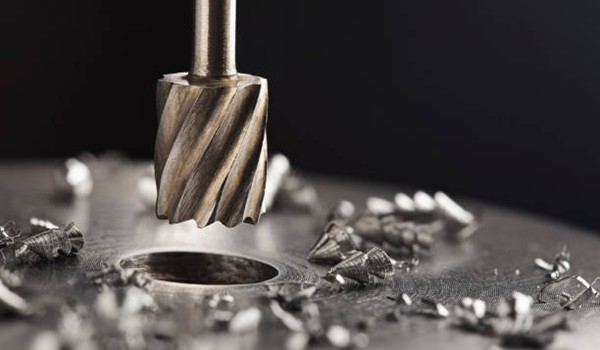
Take into Consideration the Cutting Tool’s Number of Flutes
To improve product cycle times, it is essential to increase the number of end mill flutes. For titanium, more flutes result in less chatter. For example, a 10-flute end mill, although tight for the chip loads ideal for most materials, is perfect for titanium. This is mainly because it helps to reduce radial engagements.
Avoid Interrupted Cuts and Keep Cutting Edge Sharp
Due to its low Young’s modulus, titanium is both strong and elastic. To efficiently remove a chip from the surface without rubbing, a sharp tool is essential.
Avoid interrupted cuts as much as possible, as they can hammer chips into the sharp-edged tools, potentially leading to early tool failure.
Take Cutting Tool Coating into Consideration
Coatings can significantly enhance your tooling’s ability to withstand the heat generated when machining titanium. One suitable coating to consider is Titanium Aluminum Nitride (TiAlN). It provides lubrication to prevent built-up edges, galling, and chip welding, making it particularly well-suited for the high temperatures encountered during machining.
Try High-Feed Mills when Machining Titanium
High-feed mills are ideal for maintaining low engagement when machining titanium both axially and radially. These tools are specifically designed to perform this task effectively.
Surface Finishes For Machined Titanium Parts
A variety of surface finishing techniques, including titanium polishing, can enhance CNC machined titanium products for both functional and aesthetic purposes. These surface finishes include:
- Polishing
- Anodizing
- Chroming
- Powder Coating
- PVD Coating
- Brushing
Applications Of Titanium Machined Parts
Titanium-machined parts are known for their durability, corrosion resistance, and aesthetic appeal, making them suitable for use in various industries.
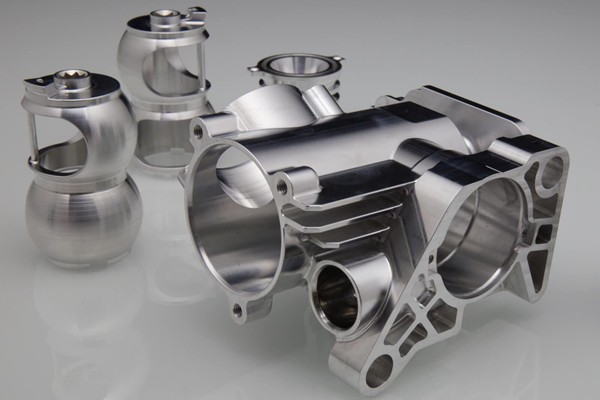
Marine/Naval Industry
Titanium’s exceptional corrosion resistance, superior to that of most naturally occurring metals, makes it the perfect material for manufacturing a wide range of products. These include propeller shafts, underwater robotics, rigging equipment, ball valves, marine heat exchangers, fire system piping, pumps, exhaust stack liners, and onboard cooling systems.
Aerospace
Titanium is highly sought after in the aerospace industry due to its numerous desirable qualities, such as a high strength-to-weight ratio, excellent corrosion resistance, and ability to perform well in extremely hot environments. Aerospace applications of titanium include seat components, turbine components, shafts, valves, housings, filter parts, and components for oxygen generation systems.
Automotive
In the automotive sector, the debate between titanium and aluminum is ongoing, with aluminum often favored due to its availability and cost-effectiveness. However, titanium still plays a role in automotive manufacturing. The primary uses of titanium and its alloys in this industry include the production of valves, valve springs, retainers, car stop brackets, suspension springs, hanging ear nuts, engine piston pins, brake caliper pistons, engine rockers, and connecting rods for internal combustion engines.
Medical and Dental
The medical industry utilizes titanium for various applications due to its high corrosion resistance, low electrical conductivity, and compatibility with physiological pH values. Titanium is used to manufacture a range of medical components, including tapered, straight, or self-tapping bone screws, dental implant screws, cranial screws for cranial fixation systems, spinal fixation rods, connectors and plates, and orthopedic pins.
Choose AS Prototypes For Machining Titanium Parts
AS Prototypes is a leading CNC machining company with a strong specialization in machining titanium. We provide top-quality CNC titanium machining services to various industries at highly competitive prices. With advanced 5-axis machining and precision machine equipment, our skilled team of designers and engineers is always prepared to handle and process your order swiftly, minimizing your time to market.
Conclusion
Machining titanium and its alloys demands meticulous care to ensure optimal part production. Unlike metals such as steel and brass, titanium necessitates the use of specific tools, expertise, and patience. For this reason, it’s often advisable to entrust titanium CNC machining projects to experts like AS Prototypes, who can deliver high-quality, precision parts.
FAQs
Is titanium harder to machine than steel?
Titanium is more challenging to machine than steel, mainly because of its high melting point. Additionally, its high malleability causes it to stretch before breaking, further complicating the machining process.
What is the feed rate of milling titanium?
When machining titanium, the cutting insert should operate at a speed ranging from 40 to 150 m/min, with a feed rate between 0.03 and 0.15 mm per tooth.
How do you stress relief titanium after machining?
Stress relief techniques can be applied to titanium alloys without affecting their ductility or strength. Forgings are created by heating the metal to temperatures between 595 and 705 °C (1100 and 1300 °F) for one to two hours, followed by air cooling.

